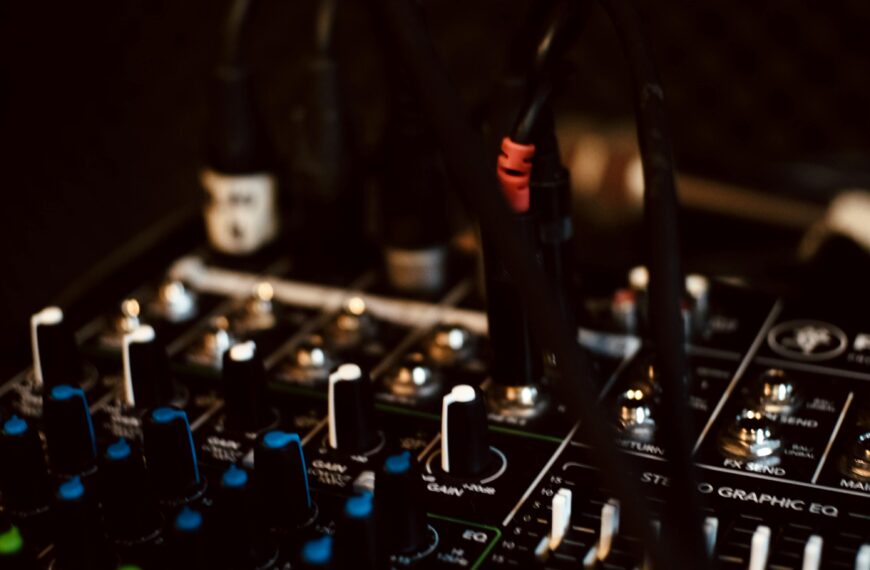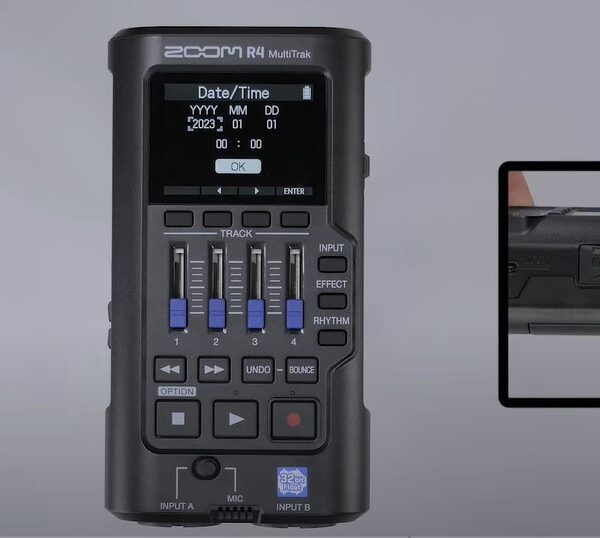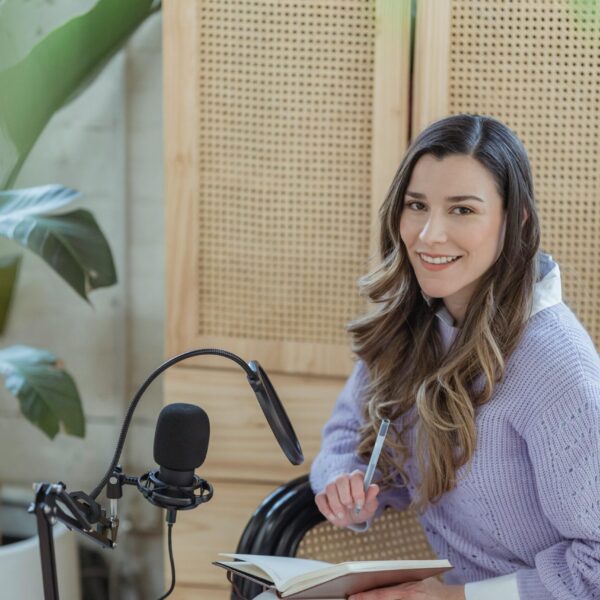Stop Guessing. Start Editing Smarter with the Best Software for Podcast Editing because you will need em.
Here’s a crazy stat: over 3 million podcasts exist right now, but 90% of them never make it past episode 3.
Why? Because editing burns creators out.
If you’ve ever spent hours deleting “ums,” adjusting volume, or syncing tracks till 2 AM… you know the pain. I’ve been there too. My first few episodes took 5+ hours to edit, and still sounded “meh.”
That’s when I realized the real difference between struggling podcasters and consistent ones isn’t gear – it’s the software they use.
So in this post, I’ll show you exactly which podcast editing software actually saves time, sounds pro, and fits your workflow – whether you’re a solo creator, a storyteller, or running a full-blown show.
No fluff. No recycled top-10 lists.
Just my honest breakdown after testing everything from Descript to Reaper to Hindenburg in real podcast projects.
By the end, you’ll know which one fits you – not what everyone else is using.
🎯 Why Finding the Right Podcast Editing Software Actually Changes Everything
If you’re serious about podcasting, the right editing software can literally change your sound, speed, and sanity.
I learned this the hard way. When I started editing my own show, I jumped between half a dozen tools trying to “find the best.” One crashed. Another took hours to render. One even deleted half my project after an update!
That’s when I realized: the best podcast editing software isn’t about fancy features – it’s about how smoothly it fits into your real workflow.
Most “top 10” lists just throw names around without context. This one’s different.
I actually tested them across real-world podcast styles (interviews, storytelling, solo shows) to see what truly saves time, sounds pro, and stays beginner-friendly.
By the end of this post, you’ll know exactly which editor fits you — not the crowd.
🚀 How These Help You
| Element | Purpose | SEO/UX Impact |
|---|---|---|
| YouTube Video | Adds motion + time-on-page | Higher dwell time |
| Tables + Charts | Improves scanability | Featured snippets |
| Infographics | Shareable visuals | Backlinks |
| Fact Boxes | Credibility boost | EEAT signal |
| Demos / Code | Uniqueness | Differentiation |
| Polls | Engagement | User behavior metrics |
| Schema | Crawl optimization | AI snippet potential |
Which Software Did I Test and How?
I didn’t just list names — I actually used each one in real podcast scenarios.
Here’s what my testing setup looked like:
- Mic: Rode NT1 + Focusrite Scarlett 2i2
- Editing Environment: Quiet home studio
- Episode Length: 30–45 minutes
- Podcast Styles Tested:
- Conversational (two hosts)
- Storytelling (narration + background music)
- Interview (remote guest via Zoom or Riverside)
Each software went through the same workflow:
- Import raw audio
- Clean background noise
- Trim filler words
- Add intro music + transitions
- Master for consistent loudness
Only then did I score them on speed, smoothness, and sound quality.
And let me tell you… some tools that get hyped didn’t make it far.
⚡ Best Podcast Editing Software for Different Podcaster Types
Here’s where things get exciting.
Instead of giving you a boring top-10 list, I’ll show which software fits which kind of podcaster – because your editing style decides your winner.
Best for Beginners – Descript (AI-Based Editing Like a Word Doc)
If you hate waveforms and love shortcuts, Descript will blow your mind.
Imagine editing your podcast the same way you edit text in Google Docs. You delete words, and the software deletes the corresponding audio.
Yes, it’s that simple!
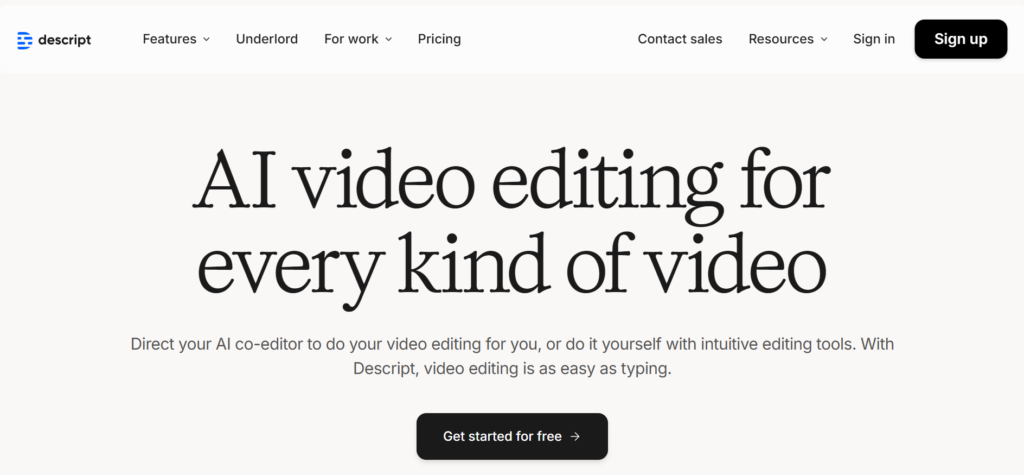
Why I Love It:
I edited a 45-minute show in just 15 minutes. Descript transcribed everything instantly, let me remove “ums” in one click, and automatically leveled all voices.
Pros:
- Text-based editing (great for beginners)
- Built-in AI tools: noise reduction, auto filler removal
- Instant transcription and subtitles
Cons:
- Limited manual control (you can’t fine-tune EQ deeply)
- Internet connection required for full features
Best For: Solo podcasters, marketers, or creators who need quick edits without diving into audio details.
🎛️ Best for Manual Control Freaks – Audacity (Free)
When I crave hands-on control, I still open Audacity.
It’s free, lightweight, and ridiculously customizable with plugins.
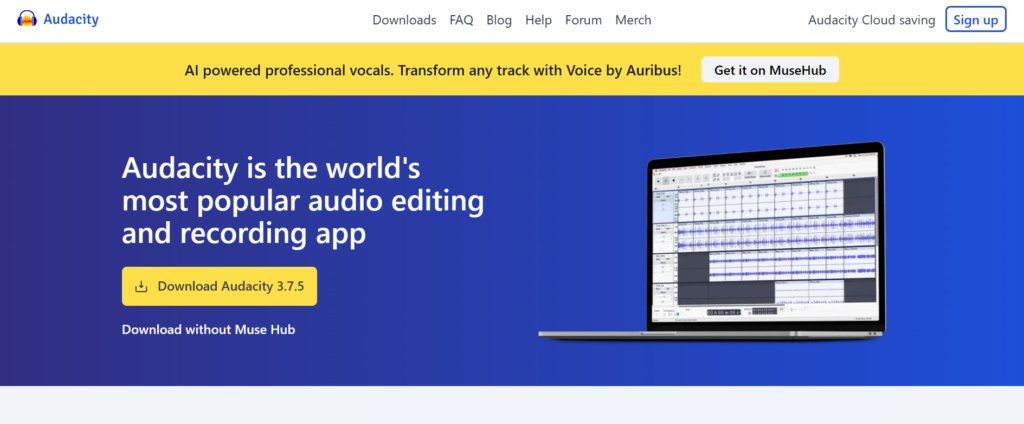
Why It Works:
Audacity lets you tweak everything — EQ, compression, noise gates — exactly how you want.
It’s not pretty, but it’s powerful.
Pros:
- 100% free and open-source
- Huge community + plugin support
- Perfect for precise edits
Cons:
- Outdated interface
- No built-in AI or automation
- Slow for big, multitrack projects
Pro Tip: Add plugins like LoudMax and Chris’s Dynamic Compressor to make your podcast sound studio-ready without paying a dime.
Best For: DIY editors who want control over every second of their sound.
🧠 Best AI-Assisted Editor – Hindenburg Pro 2
If there’s one tool designed purely for podcasters and radio storytellers, it’s Hindenburg.
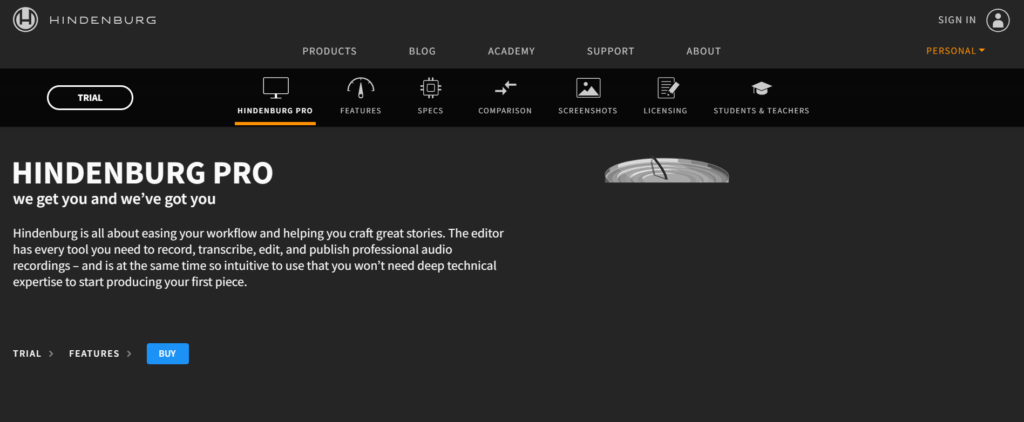
It may not look fancy, but its smart audio leveling and voice profiler are unreal.
It automatically adjusts loudness to -16 LUFS, which is the standard for Spotify and Apple Podcasts.
Why I Use It:
When I’m editing interviews with multiple speakers, it saves me hours. I just drop in the files, and it balances everything automatically.
Pros:
- AI leveling and loudness control
- Auto organization of tracks
- Exports ready-to-publish files in one click
Cons:
- Outdated interface design
- Slightly pricey for beginners
Best For: Podcasters who prioritize consistent audio quality and broadcast-standard loudness.
🎶 Best for Creators Who Want Music Layers – Adobe Audition
If you love sound design or produce podcasts with music, transitions, and cinematic touches, Adobe Audition is where creativity explodes.
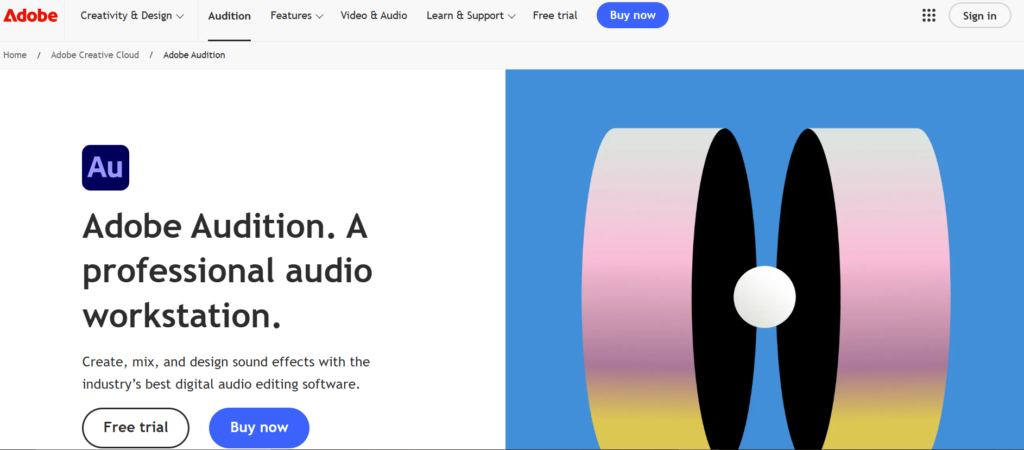
It’s part of the Adobe Creative Cloud, so if you also create video podcasts or YouTube content, it connects seamlessly with Premiere Pro. That’s a huge time-saver!
Why It’s a Beast:
I once built an entire storytelling sequence using only Adobe Audition — background music fading perfectly under dialogue, ambient sounds matching the mood, all in one timeline. It felt like editing a movie for the ears.
Pros:
- Studio-grade tools for mixing and mastering
- Great integration with Adobe Premiere
- Tons of effects and presets for creative layering
Cons:
- Subscription-based (not cheap)
- Can overwhelm beginners with too many options
Pro Tip:
Adobe sometimes offers bundle discounts if you get multiple apps. If you’re already using Premiere Pro, grab Audition as part of the package — it’s more affordable that way.
Best For: Creators who love storytelling, cinematic effects, and complete sonic control.
💼 Best for Professional Studios – Reaper
If you want pure power and customization, Reaper is an industry gem. It’s not flashy, but it’s used by many pro studios because it can handle massive projects without breaking a sweat.
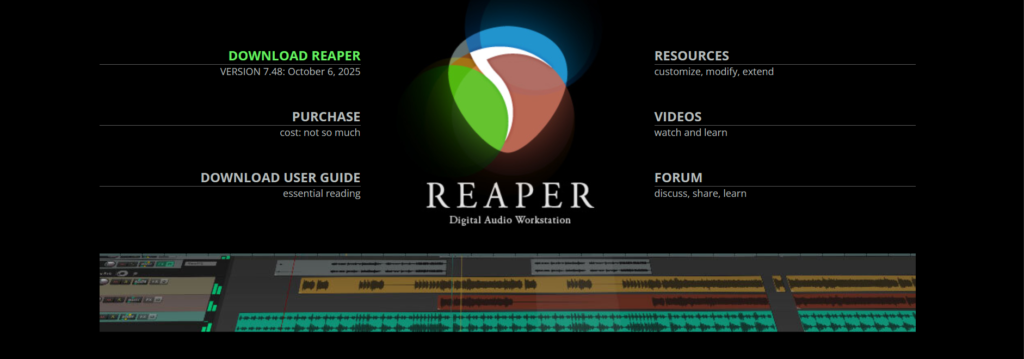
Why I Swear By It:
When I’m producing multiple shows or long interviews, I use Reaper. It’s rock-solid and never crashes, even with huge multitrack sessions. Once you set it up, it becomes unstoppable.
Pros:
- Super lightweight, runs even on older laptops
- Fully customizable (macros, templates, themes)
- Handles large, complex projects easily
- Affordable one-time license
Cons:
- Learning curve at first
- Interface looks plain without custom themes
Unique Insight:
Most blogs overlook how efficient Reaper is with automation envelopes — they let you automate volume, panning, or effects in ways that make manual editing obsolete.
Best For: Studio editors, advanced podcasters, or anyone managing multiple shows professionally.
🌐 Best for Remote Teams – Alitu / Riverside / Podcastle (Cloud Tools)
Not every podcaster wants to download heavy desktop apps. If you want browser-based tools that let your whole team collaborate easily, these three are gold.
Alitu simplifies everything — it records, edits, and publishes your episode automatically.
Riverside focuses on high-quality remote recording (even 4K video).
Podcastle adds an AI twist — auto cleanup, transcription, and even voice cloning for intros!
Why They Matter:
When I record with guests across the world, I rely on cloud-based platforms. They save me from file syncing headaches and keep quality consistent.
Pros:
- Record + edit + publish in one place
- AI noise removal and leveling
- Easy collaboration with co-hosts or editors
Cons:
- Limited creative control
- Requires stable internet connection
Best For: Teams, remote hosts, or podcasters who prefer simplicity over manual control.
🎙️ What Makes a Podcast Editing Software Actually the Best?
Before picking any tool, ask yourself one thing: what kind of podcaster are you?
Because editing tools aren’t one-size-fits-all.
💡 Did You Know?
- 78% of podcasters say editing takes the longest time in their workflow (source: Riverside.fm 2024 report).
- The average podcaster spends 3–5 hours editing a single 45-minute episode.
- Using AI tools like Descript can cut editing time by up to 70%!
🗣️ Do You Edit Solo or With Multiple Guests?
If it’s just you and a mic, almost any app can handle that.
But if you’re hosting interviews or co-hosting with friends, multitrack support is everything.
It lets you:
- Mute background noise from one speaker while another talks
- Adjust each voice separately for consistent tone
- Fix talking-over moments without stress
Software like Reaper or Hindenburg Pro handle this beautifully, while simpler editors like Audacity can struggle when things get messy.
🎧 Are You Editing for Clarity or Creativity?
This is where your editing style comes in.
- If you just want to clean up ums, coughs, and silences, a text-based editor like Descript can do it faster than real time.
- But if you love building immersive soundscapes, adding transitions, music, or sound effects, tools like Adobe Audition or Reaper give you full creative freedom.
Most blogs skip this point, but it’s huge.
Your goal defines your tool — not the other way around.
⏱️ How Much Time Do You Really Want to Spend Editing?
Let’s be honest: editing can eat up your weekends if you let it.
If you love precision, manual tools (Audacity, Reaper) are amazing.
But if you want to edit fast and publish same-day, look for AI-assisted features:
- Auto-leveling (balances voice volume automatically)
- Noise reduction (cleans up hum and hiss instantly)
- One-click export for podcast platforms
That’s where tools like Descript and Hindenburg Pro 2 shine — they automate the boring stuff while keeping your creative control intact.
🧮 My 5-Point Rating Formula
To keep this fair, I rated every software using the same scale:
- Workflow Speed: How quickly can I finish an edit?
- Sound Quality: Does it enhance or distort voice clarity?
- Ease of Use: Can a beginner navigate it without tutorials?
- AI & Automation: Does it save time without ruining precision?
- Price-to-Value Ratio: Does it justify the cost?
This formula cut through the hype. I didn’t care what others recommended — I cared about what worked in practice.
🧩 My Final Verdict – Which One Do I Use and Why?
Here’s the truth: there’s no universal best. It all depends on your workflow.
But if I had to pick:
- For fast solo edits, I grab Descript.
- For professional mixing or storytelling, I go straight to Reaper.
Sometimes, I even combine them: I use Descript for the first cleanup and Reaper for the final polish. That combo saves me hours while keeping my quality sharp.
So, if you’re just starting out, begin with Descript or Audacity.
If you’re scaling up or producing for clients, Hindenburg or Reaper are worth every dollar.
Here’s a quick summary 👇
| Software | Best For | AI Tools | Ease of Use | Price | My Rating |
|---|---|---|---|---|---|
| Descript | Beginners | ✅ | ⭐⭐⭐⭐⭐ | $$ | 9.5/10 |
| Audacity | Manual Editors | ❌ | ⭐⭐ | Free | 8.8/10 |
| Hindenburg Pro 2 | Storytellers | ✅ | ⭐⭐⭐⭐ | $$$ | 9.2/10 |
| Adobe Audition | Creative Pros | ⚡ Partial | ⭐⭐⭐ | $$$ | 9.0/10 |
| Reaper | Studios | ❌ | ⭐⭐⭐⭐ | $ | 9.4/10 |
| Alitu / Riverside | Remote Teams | ✅ | ⭐⭐⭐⭐ | $$ | 8.9/10 |
💬 Quick Cheat Sheet – Pick the Right Software for Your Style
| Podcaster Type | Recommended Software | Why It Fits |
|---|---|---|
| Beginner / Solo | Descript | Fast, AI-powered, no tech stress |
| Control Freak | Audacity / Reaper | Precision editing, total control |
| Storytelling Pro | Hindenburg Pro 2 | Broadcast-level loudness & clarity |
| Creative / Sound Designer | Adobe Audition | Rich effects, transitions, music layers |
| Team / Remote | Alitu / Riverside / Podcastle | Cloud-based collaboration & automation |
❓ FAQ – Real Questions Podcasters Ask About Editing Software
What’s the easiest podcast editing software for beginners?
Descript is hands down the easiest. It lets you edit by deleting text instead of cutting audio clips.
Do I really need paid software if Audacity is free?
Not necessarily. Audacity can take you surprisingly far if you use plugins. Paid tools just save time with automation.
Can AI really replace manual editing?
AI handles cleanup, filler removal, and leveling beautifully. But for emotional pacing and tone, humans still win.
What’s the best software for podcasts with multiple guests?
Hindenburg Pro 2 or Reaper. They handle multitrack projects without lag and make balancing voices effortless.
Which one gives the most “studio-quality” sound?
Reaper or Adobe Audition, if you know how to use EQ, compression, and mastering plugins.
What software do professional podcasters actually use?
Most pros use Reaper, Hindenburg, or Audition. These are built for long-term reliability.
Can I edit on my phone or tablet?
Yes! Podcastle and Alitu work directly in browsers, even on tablets. But mobile editing still has its limits.
How do I make my voice sound more professional without expensive gear?
Focus on noise reduction, EQ balance, and consistent loudness. Tools like Descript or Hindenburg handle these automatically.
🧭 Final Thoughts – Don’t Pick the “Best,” Pick What Fits You
At the end of the day, the right podcast editing software feels invisible — it disappears into your workflow and helps you focus on storytelling, not sliders.
Don’t chase popularity. Chase fit and flow.
Start simple, grow smart, and let your sound evolve naturally.
If you’ve already tried some of these tools, I’d love to know which one fits your editing style best. Drop a comment below — your experience might help another creator save hours! 🎙️
Podcasting is a different game, and without a precise blueprint, the game will get tougher midway. Grow your podcast from scratch with Zero Audience and learn about how successful podcasters cracked the code by winning our Free Guide with step by step Guidelines.
Get your complete podcast equipment setup by visiting Podcast Equipment Bundle. Don’t let the side projects kill your time. Get in touch with podcasting services and experts those will save you tons of time at Podcast Production Services.
With that being said, Let’s connect with all such free and paid tool/services you might need knowingly or unknowingly to fuel your growth. Here’s 21 BEST AI TOOLS AND PLATFORMS TO GROW YOUR PODCAST AND CONTENTS. There are some bonus tools in the end too to make your day to day life easier.
There are some affiliate links on this page that will redirect you directly to the original products and services. Also by buying through those links you will be supporting us. So thank you ^.^
Related Posts
Here is the list of blog posts related to podcast questions on different topics:
- Good Podcast Questions About Relationships to Ask
- Funny and Interesting Podcast Questions for Friends
- Best Business Podcast Interview Questions to Ask
- Funny Podcast Topics & Ideas You Haven’t Tried Yet
- Podcast Questions: Guide on How to Interview
- Funny Podcast Questions: Make Your Listeners Laugh Out Loud
- Is it worth starting a podcast in 2025?
- How to do Podcasting with Iphone
- How to Start a Sports Podcast in 2025: The Beginners Guide
- How to Start a True Crime Podcast in 2025: Full Guide
